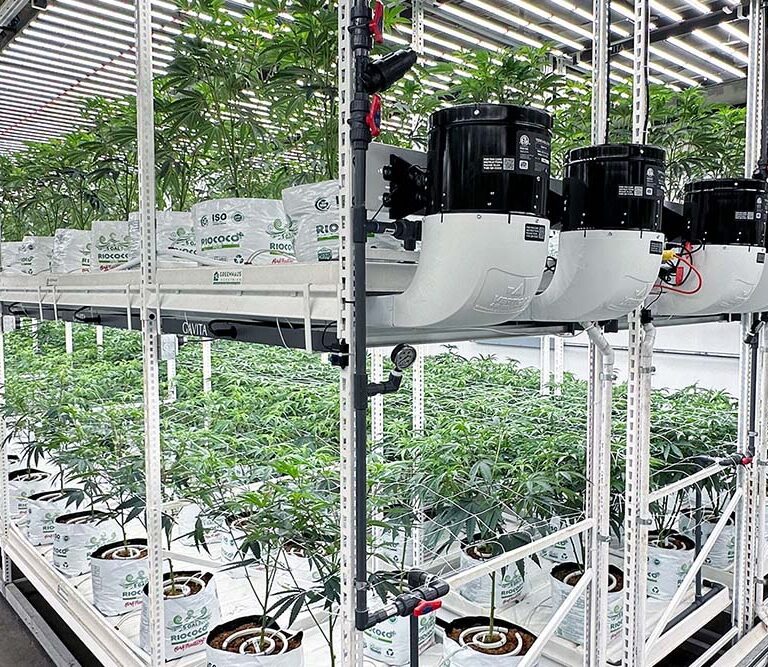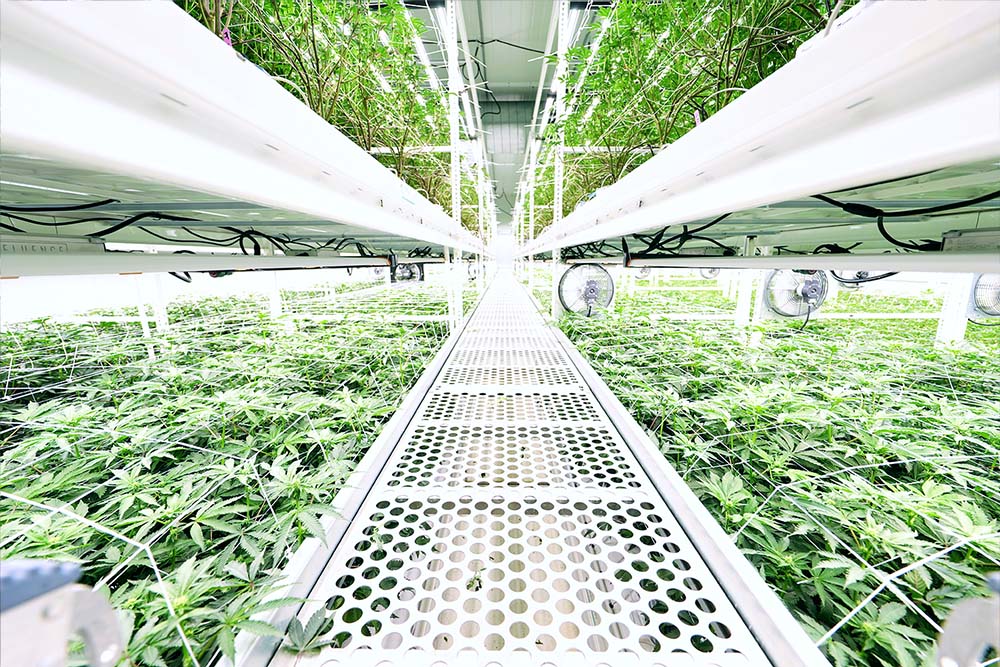Cannabis Facility Commissioning Done Right: A Guide to Success
Starting a cannabis cultivation operation is no small feat. From intricate systems to regulatory hurdles, every decision in the early stages has lasting consequences.
Commissioning is the critical but often overlooked foundation for long-term success in cannabis cultivation facilities–one that safeguards efficiency, compliance, and profitability.
This is an important starting point in the lifespan of a building designed for cannabis cultivation. Commissioning your facility upfront ensures that all systems, such as HVAC, lighting, fertigation, and irrigation, are functional and operating as intended before plants are introduced.
This article will explore the importance of commissioning, the hidden costs of skipping this step, and practical strategies to integrate commissioning into your facility’s startup plan.
What Is Commissioning, and Why Is It Important?
Commissioning, often abbreviated as CX, is a structured process to verify that all critical systems in a cannabis facility—including environmental controls, fertigation, and HVAC—are installed and functioning optimally.
Essentially, did you get what you purchased, and does it work? Overlooking that fundamental question is a mistake. That question is broken down into a comprehensive sequence of testing and calibrating equipment, resolving potential issues, and gathering baseline data before any plants are introduced.
Why Is It Overlooked?
Despite its benefits, commissioning is often skipped due to cost and time pressures.
Cost and time constraints are a common hurdle. We all understand this, but it’s important not to get hung up on those simplistic business blockers. Those pressures can lead cultivators to move plants into a facility before it’s truly ready for operational success.
Along those same lines, profit margins remain thin across the board. While this might push some early businesses to get plants out the door as quickly as possible, this feeling of urgency belies the necessary diligence required to set up an efficient facility. Get things done early, and you’ll encounter fewer problems later.
This is particularly common among new market entrants who may lack the expertise to fully understand the consequences of rushing the process. Instead of prioritizing commissioning, many cultivators focus on getting their operation up and running as quickly as possible. They often believe that an operational issue can be addressed as it arises.
Not so.

The Hidden Costs of Skipping Commissioning
Skipping commissioning might save time initially, but the long-term consequences can be devastating.
Here are some of the hidden costs:
1. Inefficiencies and Downtime
Cannabis facility commissioning is best done right out the gate. Think about it: It’s far more difficult to course-correct mid-flight. Set your trajectory correctly the first time, and you’ll reap the benefits of greater efficiencies during the many production cycles to come.
The startup phase often results in a learning curve where yields and or quality may not meet expectations during the first few harvests due to system and process inefficiencies. This is familiar to all growers. That startup phase is universal; it is the first operational phase of the facility once plants are brought in and cultivation begins.
But commission takes place before that phase–and can truly help mitigate future problems.It’s much easier to commission a facility with no plants in it, of course. Once the plants are in, the rooms rely on those systems to grow and live. It’s a living, breathing organism. The idea with commissioning is that the team will pressure-test everything and make sure that everything’s functioning so that when plants arrive, no one needs to worry about having something fail and having to bring a whole system down.
2. Reduced Yield and Quality
Cannabis plants are highly sensitive to environmental fluctuations. Poorly calibrated systems can lead to stunted growth, pest infestations, and reduced potency.
Low yields and even crop loss: These issues are avoidable with proper commissioning.
3. Higher Operating Costs
Energy inefficiencies, labor inefficiencies, and unplanned maintenance can significantly increase operating costs. This proactive approach can save cultivators significant costs associated with downtime, rework, or losses due to suboptimal growing conditions.
4. Beyond Compliance
Meeting compliance requirements for certificates of occupancy is one thing–and an important one. But COs only cover so much in their legal mandates.
A CO, while necessary for legal compliance, does not guarantee that the facility is fully ready for cannabis cultivation. A CO only confirms the facility is safe for occupational or occupancy according to the building codes. It does not verify that critical systems like HVAC, fertigation, lighting, and environmental controls are functioning and at optimal levels for plant health and yield.
Planning for Success: Steps in the Commissioning Process
Proper commissioning requires careful planning and execution. Here’s a simple roadmap:
1. Pre-Commissioning Planning
- Involve all stakeholders, including engineers, contractors, and facility managers.
- Develop a comprehensive checklist of systems to be tested.
2. Testing and Calibration
- Perform functional tests on all major systems.
- Create airflow and temperature maps to identify dead spots and microclimates.
3. Documentation and Handover
- Gather baseline data for future optimization.
- Train staff on system functionality and troubleshooting.

Retro-Commissioning: A Second Chance for Facility Optimization
For facilities that have already skipped commissioning, retro-commissioning (RCX) offers a second chance to get it right.
There are opportunities for you to fix some things that you probably have been beating your head against the wall for a while. Fear not.
Retro-commissioning seeks to improve how building equipment and systems function together. It can resolve issues that were overlooked during the design or construction phase or have developed over time.
Steps in Retro-Commissioning:
- Conduct a comprehensive facility audit.
- Test systems for accuracy and consistency, such as irrigation output.
- Implement temporary fixes, like manual irrigation systems, while optimizing long-term solutions.
Building a Culture of Data-Driven Optimization
Commissioning is not a one-time effort. It sets the stage for ongoing optimization through data collection and analysis.
Use Baseline Data Effectively
Third-party commissioning involves hiring an independent external form, firm, or consultant to perform the commissioning process. A third-party firm provides an unbiased assessment with no vested interest in the project’s design, installation, or ongoing operations. The baseline data provided by a firm like that is incredibly valuable.
Third-party commissioning firms provide detailed reports, they perform diagnostics and certifications, and they hold equipment manufacturers and installation teams accountable for any deficiencies.
These design, review, and final commission reports can be extremely useful to set a baseline for how your systems are functioning at the beginning of your facility. That gives you a baseline so that over the life of your facility, you can determine if your equipment is losing performance or starting to malfunction.
Regularly Update SOPs
Standard operating procedures (SOPs) should evolve based on lessons learned from commissioning and retro-commissioning.
Don’t leave SOPs on a shelf. Update them regularly and test their efficacy.
Engage Your Team
Encourage feedback from staff. This basic principle can help you avoid those hidden costs. It’s not just your cultivation team that will navigate the choppy waters of an uncommissioned facility.
If you’re not going to commission your facility, your production schedules are going to be all over the place. While you’re integrating or repairing a new system, it can throw off all your timelines, leading to delays and causing challenges for your wholesale team or your retail team when they’re trying to predict how much crop is coming downstream.
Avoid that through commission. And double down on the feedback loop your team can provide.
Conclusion
Commissioning is a sequence of important steps to follow early in a cultivation business’s life. It is the foundation for long-term success in cannabis cultivation.
Skipping this critical phase can lead to inefficiencies, regulatory issues, and financial losses. By prioritizing commissioning, operators can mitigate risks, optimize their systems, and position themselves for sustained success.
When you look at the useful life of these facilities, is two weeks really going to make or break your business plan? Proper commissioning pays dividends in the long run.
